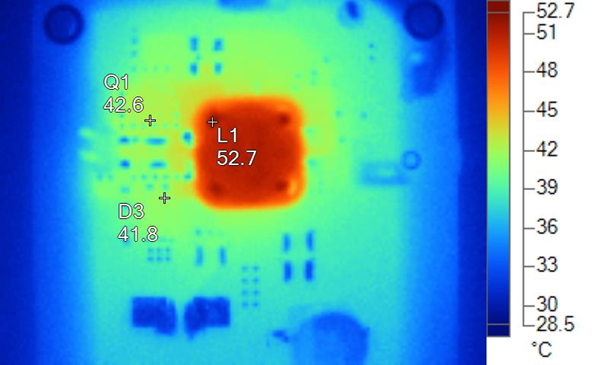TIDT328 april 2023
2.3.2 60 VAC - Output Modulated With 120-Hz Sinus (0 V – 5 V)
The thermal image in Figure 2-4 is taken with a modulated output voltage. The modulation voltage Vmod was TTL level 5-V sinusoidal with DC offset at 120 Hz.
 Figure 2-4 IR Foto 60 VAC,
Output Voltage Modulated
Figure 2-4 IR Foto 60 VAC,
Output Voltage Modulated| Name | Temperature |
|---|---|
| D3 | 41.8°C |
| L1 | 52.7°C |
| Q1 | 42.6°C |